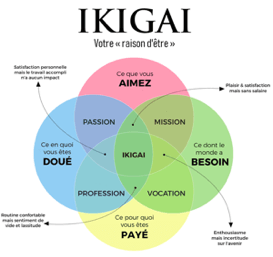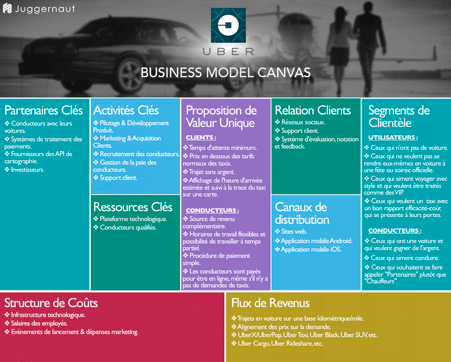Finding a startup idea
For several years now, entrepreneurship has been on the rise and the startup world is becoming increasingly attractive. The resources for creating a business are more accessible than ever before, particularly with support organisations that can now be found throughout France, and even in digital format. However, finding the right idea for a startup is sometimes a real headache!
Can’t find THE good idea, THE universal problem, THE great concept? Don’t panic. First of all, the “revolutionary” idea is something of a myth: what counts and what makes an idea successful is the way it is implemented, the way it is executed. But you need a starting point, and sometimes things get stuck! Fortunately, there are several ways to think about a startup idea.
First of all, you need to agree on the definition of a startup. Although there are several, we can agree that a startup has the particularity of being an agile young company, able to adapt its offer to the market quickly, and to grow just as fast. Like any company, it must respond to a problem to be solved in order to have a market. It is by creating value for stakeholders (users, customers, suppliers, shareholders, etc.) that a company is viable. It is therefore necessary to find an idea that meets these market constraints.
But above all, it is essential to focus on yourself, as an entrepreneur, because the coherence between man and project is central to entrepreneurship. Launching a startup is like running a marathon with a sprint rhythm… You have to keep going. Indeed, it is difficult to continue in the long term (and sometimes even in the short term!) a project that does not correspond to you, whether it is in the values, the work rhythm, the ecosystem, or any other reason. Before finding a startup idea, it is therefore important to ask yourself the right questions, so that you can then use the methods for finding business ideas more effectively. Are you ready to go?

1. The importance of coherence between people and projects
Getting to know oneself in order to be a better entrepreneur
As mentioned above, what is important is the way in which the idea is implemented, rather than the idea itself. It is therefore the overall strategy and the action plan that the entrepreneur will put in place that will make the difference and allow the idea to succeed or not. It is therefore essential for the entrepreneur to be comfortable with his or her project, to believe in it, and to be able to spend a lot of energy defending it.
This is the time to ask yourself the right questions and to try to answer them as honestly as possible, without hiding or lying to yourself. And this is not always easy!
A- Why do I want to undertake?
This is the first question to ask yourself. The answer can be made up of several elements: out of passion, out of a desire for autonomy, freedom, more responsibility, to earn more money, to create meaning by becoming an actor in tomorrow’s world, etc. There is no wrong answer, as long as they are really yours.
Beware of other people’s ambitions that you integrate for yourself, limiting beliefs, received ideas. You are questioning yourself, your own desires and fears, not those of others. Identifying your motivations for undertaking will enable you to select or avoid certain sectors of activity.
B- What are my resources? What do I have in my fridge?
By resources, we mean any element that can be useful in the creation of a business: available time (e.g. 10 months of full-time work), skills (e.g. expertise in back-end development), money to invest (e.g. savings of €5,000), professional and personal network (e.g. professional network of freelance graphic designers; a business lawyer in my family), and any other resources that could be useful in the creation of a project (access to a workspace, tools at my disposal, support organisations, etc.).
You can list them to visualise them, and then deal with them. This effectual logic allows you to build on what you already have, to set relevant and achievable objectives, enabling you to take action quickly.

Finding your Ikigai for professional fulfilment
Ikigai is a Japanese analytical tool that means “finding your purpose”. Ikigai manifests itself when a person does what they love, what they are good at, what they are/will be paid for, and what the world needs. By working with this tool, you take care of yourself, but also of the outside world, with a desire to be useful to society.
This consideration of “the world” does not only mean “the market” as it is generally understood in business creation. The world has a broader connotation, referring to activities that are beneficial to the environment and society.
It is therefore a comprehensive approach to entrepreneurship, less anthropocentric (human-centred) than the market approach taught and used until now. Consideration of this element is increasingly important at this time, when the search for meaning is felt in all professional circles, in the face of a societal model that must be reinvented.
Let’s not forget that an entrepreneur must be versatile and cannot be an expert in every field. A company has many facets (marketing, research, finance, recruitment, communication, etc.) and the project owner cannot know how to do everything.
One of the most important things in entrepreneurship is to know how to surround yourself with people. So it goes without saying that when working on the Ikigai, the category “what you are good at” should not be limiting for entrepreneurship. If you are not good at marketing, you will surround yourself with people who are good at it. In this category, in addition to your skills, it is important to identify your soft skills (creativity, collective thinking, oral skills, etc.).

2. Four ways to find your idea
A- Working on improving an existing product or service
When we think of a start-up, we often think of innovation. And when we think of innovation, we think of something totally new, something never seen before; but this is invention. Innovation occurs when there is an improvement, a differentiation from the current offer, which has a value on the market.
Thinking about improvements to existing products or services is therefore a good way to come up with a startup idea. Here are three areas to think about:
Adding features/services. Let’s take the example of something we use every day: the alarm clock. It’s an object that has been around for a very long time, with a single purpose: to allow us to wake up at the desired time. However, many companies have worked on improving this very common object. We can now buy olfactory alarm clocks or “dawn simulators” to wake up more gently. These innovations, which combine several existing technologies, find a market because of a different value proposition () for an object with the same basic function (). In terms of services, we can take the example of La Poste, which has added to its mail delivery offer a service for visiting isolated elderly people.
A different marketing position. Here, we take an existing product, to which we do not add any major differentiating element, but which we position differently on the market: for another target, with another identity, with other values put forward, etc. This is the case of the startup Respire, for example, which began its success story with the sale of natural deodorants aimed at a public that was not very well-informed about what they apply to the skin. Natural deodorants, like their subsequent products, are nothing new: they have already existed for many years in specialized shops (organic, zero waste, etc.). However, these specialised stores attract people who are already aware of the issue, who are concerned about better consumption, i.e. a restricted public. Respire’s challenge is to bring this type of product to the mass market with a much more fun image, and to educate consumers who are not aware of cosmetics. By positioning themselves differently, they reach another target.
Diverting the use of a good or service. This is the case with Play-Doh modelling clay, for example, which we all played with as children. Initially this modelling clay was used as a wallpaper cleaner. Diverting its use helped the company to survive the difficulties it was facing. In the case of services, this is the case of certain car-sharing companies that use their network of car-poolers to offer to transport a parcel in their trunk during passenger journeys.
When it comes to improving existing goods or services, it is extremely relevant to rely on user feedback. Make a prototype, have it tested, take the feedback, and start again. This co-creation logic is called lean startup, and allows for more agility, relevance, and legitimacy on the market. Users direct the development, we speak of user-driven innovation: they work to develop a product or service that really corresponds to them.
B – Disruptive innovation, inventing something new to meet a need
Disruptive innovation refers more to invention in the sense that it creates something new to respond to a problem: a new product, a new service, a new need. Note that this must always respond to a problem and the market in order to be economically viable, otherwise it remains an invention; what differentiates an invention from an innovation is that the innovation has found its market, and is therefore viable.
To have a disruptive innovation idea, it is therefore necessary to start with a problematic, a need, and then to call on one’s creativity and/or the creativity of a group of people: experts in the field, potential users, stakeholders, etc. Often, new technologies are associated with these innovations, and the design takes a relatively long time, due to the long phases of research, testing, validation, and also standardisation. As with any new technology, there can sometimes be reticence, but as Henry Ford, who democratised the car, said: “If I had asked people what they wanted, they would have answered faster horses”.
To give you a more telling example, let’s take the case of the gyrorou, pictured below.
This means of transport, which seems to have come out of science fiction films, initially meets the need to get around in large cities. Indeed, the roads are often overloaded and parking is a real headache. Public transport is often crowded. Bicycles and scooters are relatively cumbersome. The inventor of the gyroroue is therefore responding to the problem of getting around the city, but in a much faster and more practical way than existing means of transport. The machine is small, easily transportable, and allows you to get around quickly and effortlessly.

C – Innovating the business model: thinking outside the box
Working on the business model of an activity is the best way to reinvent your sector, or at least to differentiate yourself from your competitors.
For this, a tool is very useful: the canva business model. Below is the Uber business model canva, which we will use as an example.

This tool provides a synthetic view of a company’s economic model, with the value proposition at the centre, which is the central element of a business. To the left of this are the key stakeholders, the company’s key activities and the resources needed to manage these activities. This is the upstream part of the sales act. To the right of the value proposition, there are three parts reserved for the target, the customer relationship, and the distribution channels. As these parts are linked to marketing and therefore to revenue, we find the incoming flows below.
To find an idea by working on the business model, it is enough to reproduce that of a sector of activity, and to try to change the elements of one or more boxes. Uber differentiates itself in this way: the company has built on the taxi business model, and changed mainly the distribution channel (which has, in fact, impacted key resources, cost structure, etc.). Thus, to travel with a driver, it is now sufficient to log on to an application managed by algorithms which, among other things, allow the price of this type of transport to be lowered, rather than calling a switchboard.
NB: another way of modulating an existing business model to find an idea is to work on the value chain (suppliers, distributors, etc.). For example, cutting out intermediaries, changing logistics, or finding totally different types of distributors can be a good way to find a differentiating startup idea.
D – The copycat: taking advantage of a market opportunity
The copycat is simply copying a business idea seen elsewhere. This can be the case, for example, with restaurant chains, such as the recent boom in poke bowls, Hawaiian specialities that were unknown in France until recently. Inspiration comes from travel or even from asking around at home.
In addition to importing an idea from another country, copycat can also mean copying a business from one sector to another. For example, tourist flat rental platforms have been very successful. Some entrepreneurs have had the idea of creating platforms for renting out foodtrucks, party halls, or inflatable games for children.
These types of projects, depending on how they are run, can also be what is known as a muse, i.e. a business that generates money on a more or less fixed basis, requiring only a few hours of work per week to maintain or advertise it. Note that this requires finding a very targeted, almost niche market, so that the site is easily identifiable by customers who have this specific search.
3. The importance of coherence between people, project and market
What have we learned?
- We have to get rid of the fantasy of a good idea: finding a startup idea takes work.
- Knowing yourself and knowing what you want and / or what you don’t want allows you to better orient yourself towards an idea and be in phase with it.
- To get inspired and/or validate a business idea, you need to take the time to work with different tools. The four methods presented here do not all have to be applied, but it is interesting to work on several of them to open up to other perspectives.
- It is essential to keep in mind the market, the need, and the creation of value: a good or a service will work if it is a solution to one or several problems of its target.
- At a time when the economic models of our societies are running out of steam, it is essential to consider the environment as an integral part of the business model, for a sustainable startup with high value for society. This is the sustainable value proposition approach, more relevant than ever.
Entrepreneurs are building the world of tomorrow, their responsibilities are huge: we need men and women actors of change 💪
Reveal your talent as an entrepreneur !
Do you secretly dream of entrepreneurship and business creation ? Do you want to launch an idea or a project that is close to your heart ? You have every reason to believe that your idea has value. Find on this page a summary of what it means to “Become an entrepreneur” and dive into the entrepreneurial adventure by validating one by one your assumptions and by confirming your market.
